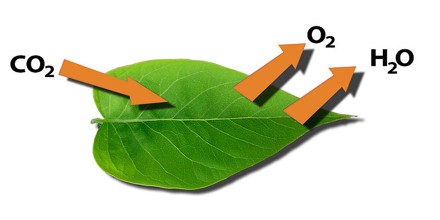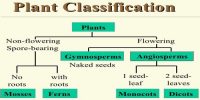Functions of leaf:
- The general functions of a leaf are described below:
- The main function of leaf is to produce food. It produces food through photosynthesis.
- Gaseous exchange is an important function performed by leaves. During respiration plants intake oxygen and give out carbon-di-oxide. Again when leaf manufactures food it consumes carbon di-oxide and gibes out oxygen.
- Transpiration is another important function of leaf. Plants absorb excess water. Leaves help the release of excess water in the form of vapor.
- The function of leaves is to help the plant produce food by converting the energy in sunlight into chemical energy that the plant can eat.
- The leaf also has veins that can help to support the leaf by transporting food, water and minerals to the leaf and to the plant.
An important feature of leaves is the presence of stomata or stomates. Each stoma consists of a tiny pore surrounded by two specialized, sausage-shaped epidermal cells called guard cells. These tiny pores open and close to regulate the passage of gases and water to and from the leaves.













